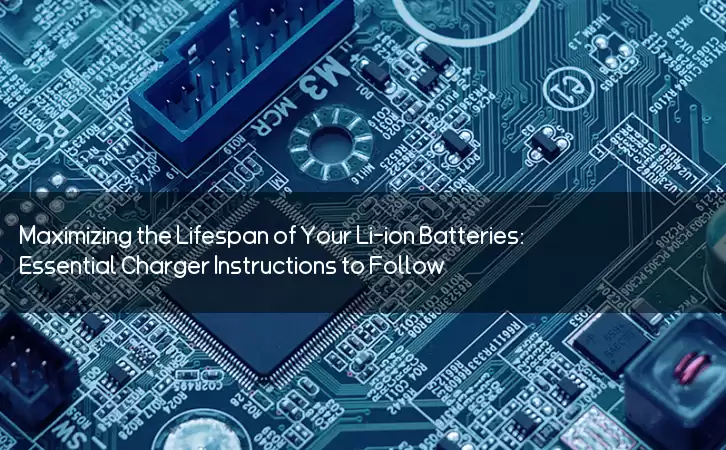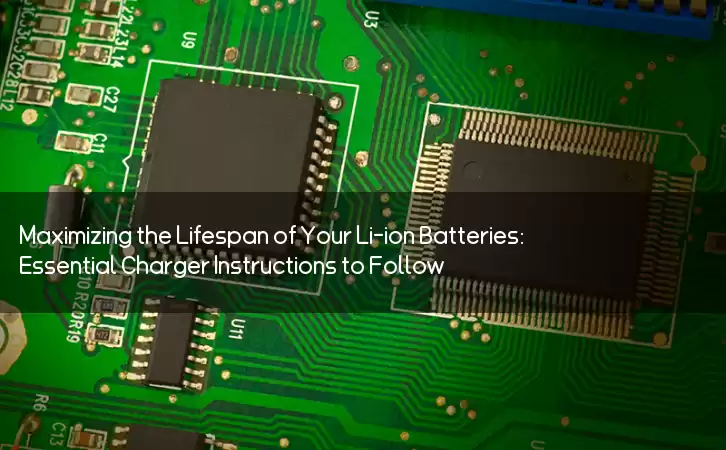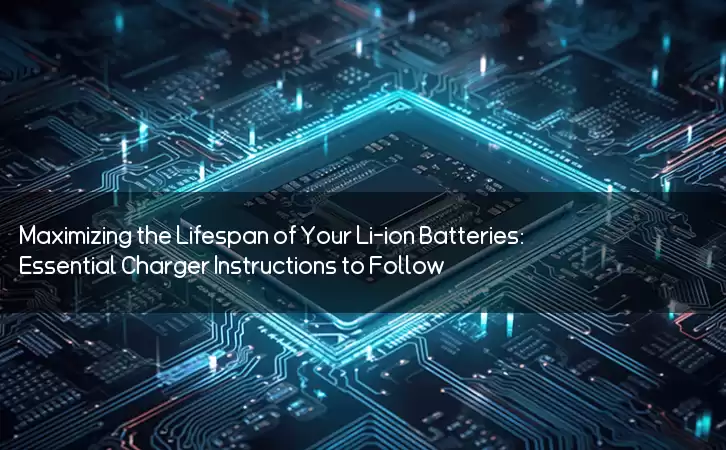Information Center
Maximizing the Lifespan of Your Li-ion Batteries: Essential Charger Instructions to Follow
Published:2023-08-08 20:32:04 Author:Green WCND Views:90Li-ion Battery Charger Instructions

As more devices adopt lithium-ion (Li-ion) batteries, the importance of knowing how to charge them correctly is crucial. Li-ion batteries are commonly used in smartphones, tablets, laptops, and other portable electronics. Unlike traditional rechargeable batteries, Li-ion batteries have a higher energy density and a longer lifespan. However, they are also more sensitive to charging and handling. To maximize the performance and lifespan of your Li-ion batteries, here are some essential instructions to follow when using a Li-ion battery charger.

1. Use a Suitable Charger

The first step to proper Li-ion battery charging is to use a charger that is specifically designed for Li-ion batteries. Do not use any charger that is not explicitly labeled as a Li-ion battery charger. Using an unsuitable charger can cause irreversible damage to the battery, resulting in reduced capacity, shorter lifespan, and even a fire. Always use the original charger that came with your device, or purchase a third-party charger from a reputable manufacturer that is compatible with your Li-ion battery.
2. Check the Voltage and Amperage
Before charging your Li-ion battery, check the voltage and amperage requirements of your battery and the charger. The voltage and amperage should match, or else it can damage the battery or cause it to fail prematurely. Most Li-ion batteries have a voltage range of 3.7 to 4.2 volts and a recommended charging current of 0.5C to 1C (where 1C is the battery’s capacity in ampere-hours). Make sure to read the label or manual of your battery and charger to ensure they are compatible.
3. Charge at optimal temperature
Li-ion batteries are sensitive to temperature, and extreme heat or cold can reduce their lifespan and performance. It is best to charge Li-ion batteries at a moderate temperature range of 10°C to 30°C (50-86°F). Charging at high or low temperatures can cause damage to the battery and reduce its charge capacity. Avoid charging batteries when they are excessively hot from use or charging, as this can cause the battery to swell or even explode.
4. Avoid Overcharging
Overcharging Li-ion batteries is a severe safety hazard and can damage the battery’s internal components. Most Li-ion battery chargers have overcharging protection built-in, which automatically stops charging when the battery reaches its full capacity. Once the battery is fully charged, unplug the charger immediately to prevent overcharging. Avoid leaving batteries on the charger for lengthy periods when they have reached their full capacity.
5. Store the battery correctly
Proper storage of Li-ion batteries can help prolong their lifespan and prevent damage to the device, charger, and battery itself. If you do not intend to use the battery for an extended period, it is best to store it at 40% to 60% charge capacity. Avoid storing the battery in high-temperature environments, direct sunlight, or humid areas. Ensure that the battery terminals are clean and free of dirt and debris before storing.
In conclusion, Li-ion batteries have become a commonplace in our daily lives. However, taking care of these batteries requires some essential instructions. By following these instructions, you can prolong your battery’s lifespan and performance and prevent potential hazards. Remember to use a suitable charger, check the voltage and amperage, charge at optimal temperature, avoid overcharging, and store the battery correctly. By doing so, you can avoid premature battery failure, reduce waste, and prolong the lifespan of your device and battery.
Power Adapter Design and Customization Guide for Portable Electric KettlesI. Common Design Types for Portable Electric Kettle Power AdaptersPortable electric ke···
I. Common Design Types of Power Adapters External Independent Type (Most Common) Design: A standalone adapter (e.g., "black brick") connected to the p···
Handheld Vacuum Cleaner Power Adapter Selection GuideIntroductionHandheld vacuum cleaners have become a mainstream tool for household cleaning due to their port···
Drill Power Adapter Selection Guide.drill-container { font-family: Arial, sans-serif; line-height: 1.6; max-width: 800px; margin: 0 auto; padding: 20px; } .dril···





